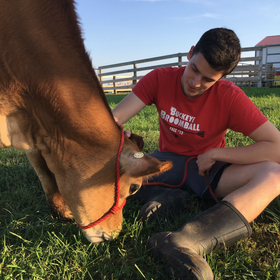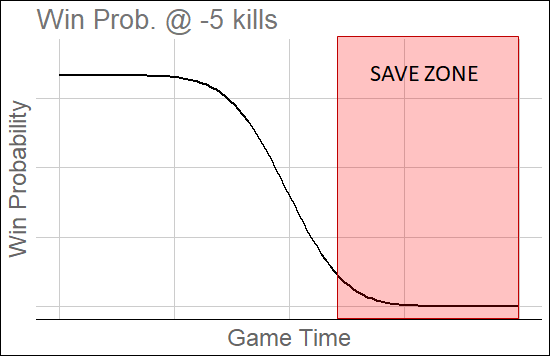
First Thoughts: Control
With the Call of Duty World League just around the corner, we are about to see something we’ve never seen before: competitive Control. Control is a new game mode added in Black Ops 4, combining the point capturing aspects of Hardpoint and the finite number of lives only seen in Search and Destroy. While the premise of Control is relatively straightforward: either capture or defend the two points on the map without losing all your teams’ allotted lives, I wanted to dive into some of the possible strategies and theories behind Control and what to expect as the game mode evolves.
Evolution of Strategy
As I just mentioned, the only thing we can be sure of about strategy in Control at CWL Vegas is that it will be markedly different than we will see at Champs at the end of the year. As with any new game mode, along with game patches as we progress throughout the year, teams will be constantly adjusting to other teams’ strategies before an equilibrium is reached. Consider that “anchoring”, as we currently know it, was not originally so prevalent when Hardpoint was introduced to the competitive scene in Black Ops 2. Teams had to figure out an anchors’ importance before it became a crucial role in Hardpoint. Currently, I would say that the basic strategy of Control involves getting an early lead and trading kills. Defending teams have a clear advantage since they are only required to survive until time runs out in order to win. Oppositely, the attackers must capture points and put themselves at risk. When an attacking team begins to fall behind in kills, it becomes very hard to mount a comeback. This asymmetry in the objectives for each team leads to times when the defense losing a point becomes advantageous because the attackers will all be focused on the same spot, instead of having to split resources.
Non-Traded Kills
We talked a lot last year about the importance of non-traded kills (NTK). I don’t think, save for maybe S&D, there is a game mode more perfect to show off the importance of NTK than Control. The limited number of lives combined with an objective that requires tactical action means that baiting, trading, and going undetected will be of utmost importance. While we won’t be able to measure NTK until CWL Pro League, rest assured that this stat will be a great indicator of team success and individual player success in Control. Along with simple NTK, the strategy of flanking makes more sense. Flanking behind opponents is a great way to pick up at least 1 or more kills without being traded, significantly helping your team’s chances. Flanking is very popular right now in the current Control meta and expect it to remain that way, as it combines information gathering with high NTK potential.
Streaks
For anyone who has watched Control, streaks play a huge role in later rounds. Streaks carry over, as do specialist abilities. The ability to stack these in later rounds can lead to blowouts. One of the first things JP and I will do after getting the data from Vegas is determine the effect of earning streaks on the win percentage in Control. I would wager that preventing your opponent from getting streaks in losing rounds will be one of the greatest indicators of comeback success. That being said, what can a team do to limit opponent streaks? Obviously avoid being killed, but more importantly, if you’re losing, don’t feed the enemy their streaks or specialists abilities. This leads into a strategy that teams don’t utilize at all right now online but I think may become more common as the season progresses.
The New Meta?
Team-killing. What is it good for? Well, actually something I believe. Team-kills do count as a life for the team that commits the sin. This could potentially work to the advantage of a team with only a few lives remaining as time ran down in a Control game. Defenses especially want to get streaks at the end of a winning round, so they can be used to leverage upcoming offenses, as scorestreaks carry over round-to-round. I think the biggest thing we don’t see right now that we may start to see is teammates killing each other to make an almost-sure round-loss occur before the other team can snowball any more points than necessary. In my view: the vast majority of points towards scorestreaks and specialist streaks as well go to the team who’s winning as the round approaches the end. I think that it is at least worth an investigation into the data on win-percentages going into the final minute when trailing in kills or with little time left on the clock.

This graph shows what a team’s win probability with 5-kill deficit might look like as a game goes on. Once the team reaches the “Save Zone,” their chances of winning are so low they might as well just keep the enemy from benefitting from the continuation of the round.
Potential Control Statistics
- OFF/DEF Win Rate - this will be crucial for determining if starting on defense is an advantage. For example, if the defensive round win rate is 59% on Hacienda, then teams might want to start there and carry potential steaks into offense, the less favorable side.
- Kill Diff. Win % - or the win percentage of a team when the kill differential is any given number. For example, being able to determine that the Kill Diff. = -5 (down 5 kills) win percentage is only 30%, for example, would force teams to play much more passively to avoid these situations. This is similar to the “first blood effect” in Search and Destroy, where the team that draws first blood, and a man-advantage, wins the round >70% of the time on most maps and sides. Teams must avoid first deaths because they understand its detrimental effect.
- Death % @ 30-20; 20-10; and 10-0 Lives - or the percentage of a players deaths that occur in the team’s first 10 allotted lives, middle lives (lives 20-10), or the team’s last 10 lives. This could be an important individual stat for measuring a players patience and “clutch factor.” For example, the average player would die 33% in each group, while a player that is impatient when a team is losing may die 40% of the time in the 10-0 lives range. Conversely, a Death % in 10-0 lives < 33% would indicate a player who manages to stay alive when a team is down to its last lives.
After CWL Vegas, we will be able to compile all of the data on games from the event. We will update our leaderboards with Death % groupings, more traditional stats for Control like KD, and some of the stats JP referenced earlier. Also, expect an article in the coming weeks analyzing that data to determine my two main interests: 1) How does early game kill differential influence round win percentage? and 2) How much of an advantage is starting on Defense, and how many more rounds are affected by a first-round victory?